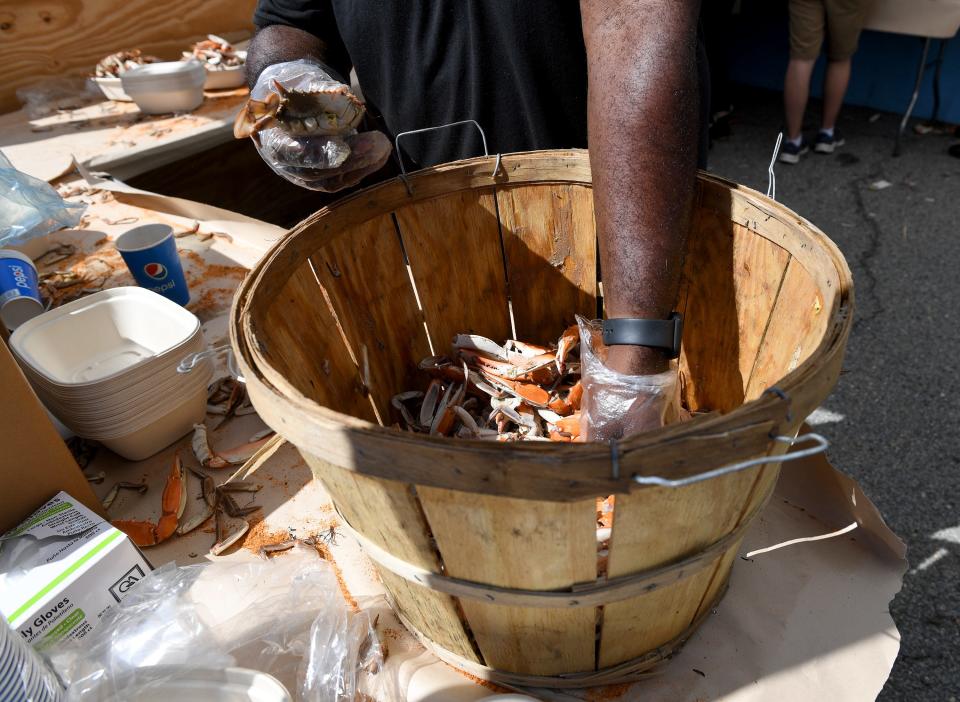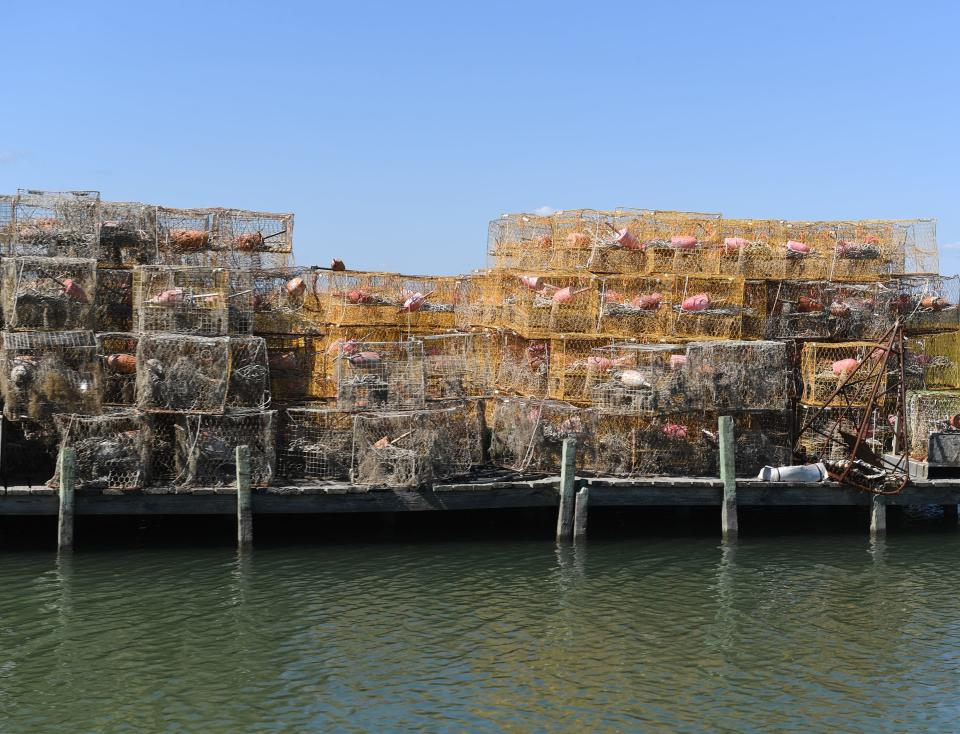Chesapeake Bay blue crab numbers show slight rebound. How will it impact prices
Joanne Parker, owner of Parker's Produce & Seafood in Pittsville, knows all too well what a financial boon plentiful crab meat can be, but also how lagging supply can hurt her bottom line.
As the Maryland Department of Natural Resources released the latest Baywide Blue Crab Winter Dredge Survey on Thursday, consumers hoping to order up a plate of the seafood favorite on the Eastern Shore could see prices impacted by a decrease in supply. While the season's crabbing is already underway in both Maryland and Virginia, early indicators are not entirely positive.
"We sell Maryland crabmeat and its price is up from the time we opened in April," Parker said. "We're having an increasingly difficult time getting it. When we do order, we don't always get the requested amount at the moment even though we typically do. In the last week or two, we have been shorted because they don't have the supply."

The issue, Parker noted, is the lack of crabs ready to be picked for the market, causing prices for her business to increase an estimated 10% or more.
While business remains steady during summer and holidays like Memorial Day weekend, a rush worries Parker because of the likely possibility of selling out of crab meat despite daily deliveries.
More on crabs and invasive species Is invasive blue catfish depleting Maryland blue crab? Gov. Moore wants feds to help
Carol Pankratz, director of domestic operations for Handy Seafood in Crisfield, simply says it is too early to tell how a potential supply issue could impact seafood businesses.
"It's too early to see what the trend is going to be, but during the holidays, we see increased demand for items like soft crabs," Pankratz said. "We have not really had issues meeting our demand for (crabs), but year to year it changes with the weather. We'll know in the next few weeks what the trends will be."
Modest recovery, continued concerns
Despite historic decreases in the blue crab population the past three years, the report saw a small rebound of 323 million blue crabs in the Bay up from 227 million in 2022. That year's total represented the lowest in the survey’s 33-year history.
"Improvements in water quality are key for all Chesapeake Bay species," said Genine McClair, Blue Crab Program manager for the Maryland Department of Natural Resources. "Water quality impacts the size and duration of dead zones, or hypoxic areas that occur annually in the Bay. The ability of (nursery habitat) to grow and provide valuable areas, and the availability and quality of food sources are important in conservation efforts."
McClair noted there were many ongoing restoration efforts occurring throughout the watershed aimed at addressing water quality concerns.
The data also noted the adult female crab population increased when compared with last year. While juvenile crab numbers improved slightly when compared to 2022, the juvenile population remained below average for the fourth year in a row.
Male crab numbers showed only a slight improvement from last year’s all-time low numbers. Harvest levels for male crabs exceeded the conservation benchmark for the second consecutive year, raising concerns about whether such levels of exploitation could be sustained. In 2022, there were slightly over 2 million male crabs five inches or larger per 1,000 square meters.
"Blue crab production is highly variable and influenced by a number of factors. Having mature females large enough to produce a good year class increases the likelihood of having good recruitment. Environmental factors play a big role, like ocean currents, coastal wind speed and direction, and tides are important for larval development and influx into the Bay," McClair said.
More on past surveys Chesapeake Bay adult blue crab numbers hit record low, survey finds
Through a multistate partnership beginning in 1990, the Virginia Institute of Marine Science and Maryland Department of Natural Resources conduct the annual survey of the population of blue crabs in the Chesapeake Bay and its tributaries. It covers more than 1,500 locations, making the winter dredge survey one of the most comprehensive studies of any species in the Bay.
The joint study usually calculates from December through March.
'Still plenty of cause for caution'
Robert T. Brown, president of the Maryland Watermen's Association, said crab prices that dip slightly this time of year have picked up in recent weeks. Weather issues, as well as limited crabs ready to be harvested, all contribute to a decrease in supply.
"We have many adolescent crabs and more sea grass in areas where it hasn't been and that helps small crabs," Brown said. "What we are seeing is a large number of small crabs and that's good because they will be large enough before the season's over. We should have a very good fall season after they're done going through their molting process."
Amid the possible silver lining, the report gives Chris Moore, senior regional ecosystem scientist for the Chesapeake Bay Foundation, reason for pause.

"While this year’s numbers show some signs of recovery in the Bay’s blue crab population, there is still plenty of cause for caution," Moore said. "Because the blue crab population fluctuates annually due to a variety of factors, we hope the improvements observed this year continue over the long term. The recent decline in the Bay’s underwater grasses is likely contributing to low blue crab numbers, as well as pollution and predation by invasive blue catfish."
According to Moore, long-term recovery of the bay’s blue crab population will only be possible through continued management of the fishery and combined actions to improve water quality.
Moore continued to advocate for tagging crab pots to better enforce regulations on the limit watermen can use while crabbing.
More on other invasive species After 20 years, Maryland is still struggling to get rid of this 'Frankenfish'
This article originally appeared on Salisbury Daily Times: What does a modest blue crab rebound mean for summer prices?

